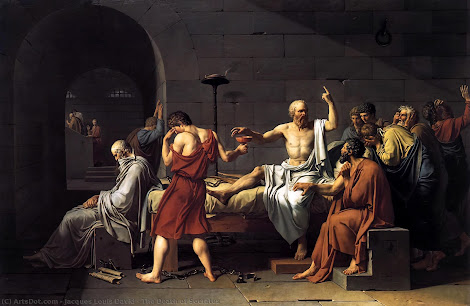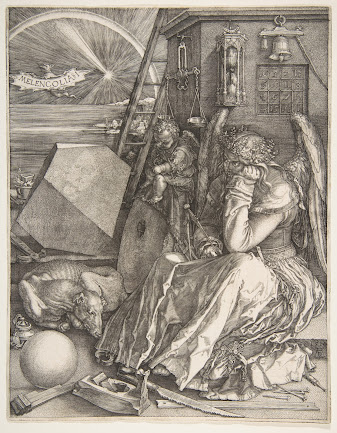Paul's Post 3/28/24
Hudson River School
Asher B. Durand's Kindred Spirits (1849) and Thomas Cole's The Oxbow (1836) are quintessential examples of the Hudson River School style. In Kindred Spirits, Durand depicts a serene landscape with two figures standing amidst towering trees, celebrating the bond between humanity and nature. The painting's meticulous detail and luminous atmosphere capture the sublime beauty of the American wilderness. Similarly, Cole's The Oxbow portrays a panoramic view of a bend in the Connecticut River, where untamed nature dominates the scene. The painting juxtaposes the tranquil valley with a stormy sky, symbolizing the tension between civilization and the wild frontier.
Pre-Raphaelite Brotherhood:
John Everett Millais' Ophelia (1851-1852) and Dante Gabriel Rossetti's Lady Lilith (1866-1868) exemplify the Pre-Raphaelite Brotherhood's fascination with medievalism and symbolism. In Ophelia, Millais depicts the tragic Shakespearean character floating in a stream, surrounded by lush foliage and flowers. The painting's rich colors and intricate details imbue the scene with a haunting beauty, capturing the character's emotional turmoil. Similarly, Rossetti's Lady Lilith portrays a captivating femme fatale surrounded by opulent fabrics and exotic objects. The painting's enigmatic expression and sensual allure invite viewers into a world of Victorian romance and mystique.
Comparison of Intentions
While the Hudson River School artists celebrated the spiritual significance of the American landscape, the Pre-Raphaelite Brotherhood delved into themes of love, beauty, and spirituality with a medievalist twist. Both styles aimed to evoke emotional responses from viewers but through different approaches and subject matters. The Hudson River School conveyed a sense of awe and reverence for the natural world, while the Pre-Raphaelites explored the complexities of human emotions and experiences through richly detailed narratives.
Sources:
The Metropolitan Museum of Art. “The Metropolitan Museum of Art.” Metmuseum.org, 2023, www.metmuseum.org/
National Gallery of Art. “National Gallery of Art.” Nga.gov, 2000, www.nga.gov/.
Tate. “Tate.” Tate, 2016, www.tate.org.uk/.






Comments
Post a Comment